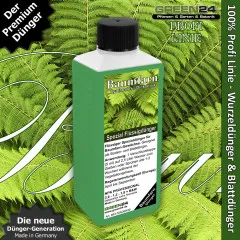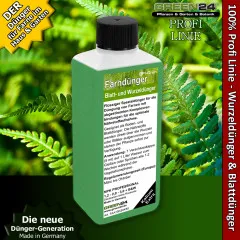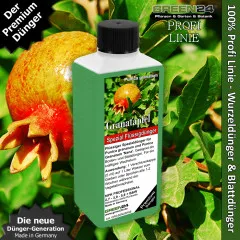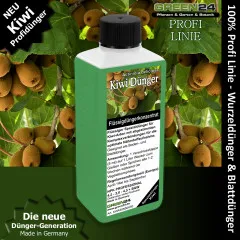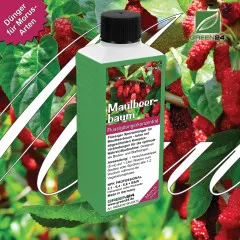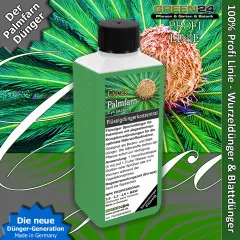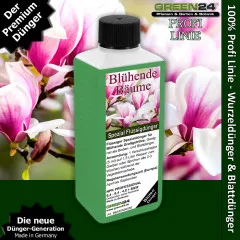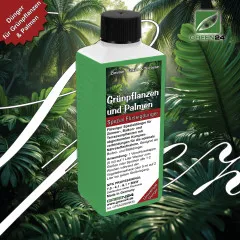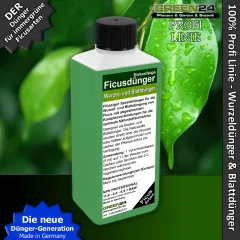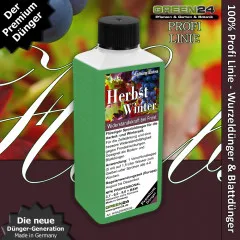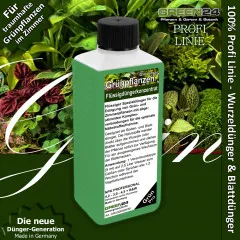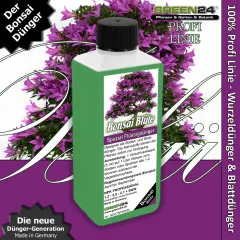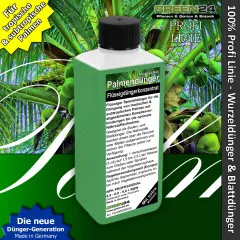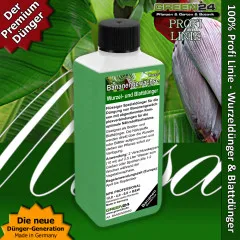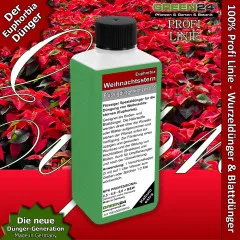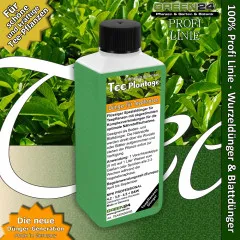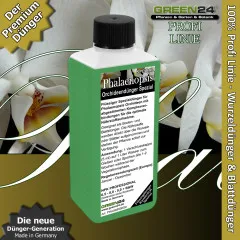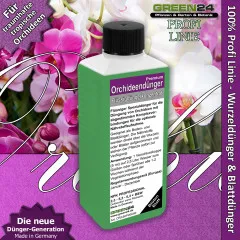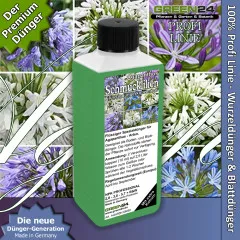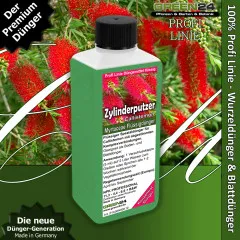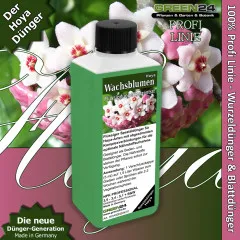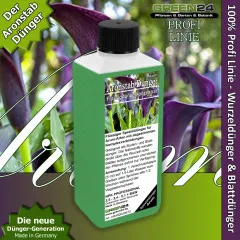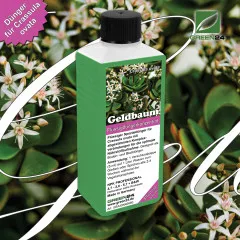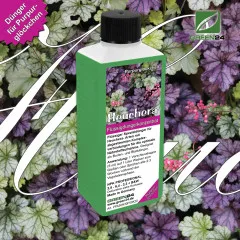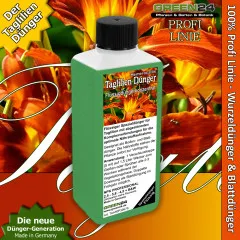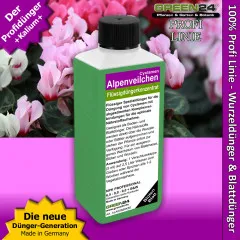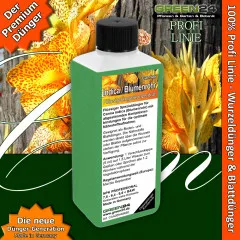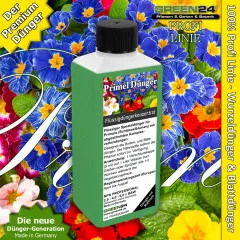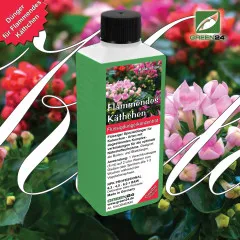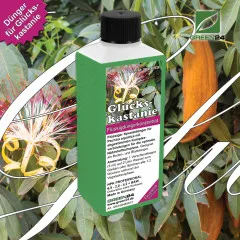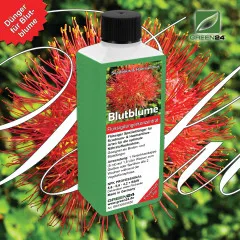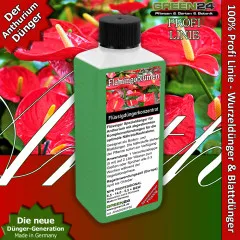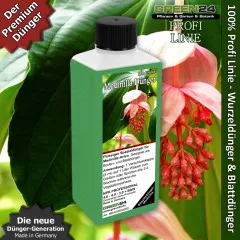Amorphophallus Success: GREEN24 Specialized Fertilizer for Spectacular Aroidae Cultures
Successful cultivation of Amorphophallus requires special knowledge about the needs of these fascinating tuberous plants from the aroid family. Amorphophallus, as heavy feeders, have special nutrient requirements for optimal flower and growth development and need intensive supply during their active growing periods for maximum flower splendor and powerful growth. Our Amorphophallus fertilizer is specifically tailored to the needs of A. titanum, A. konjac and related Aroidae species and offers professional Amorphophallus technology for maximum success.
Plant Profile: Amorphophallus (Titan Arum & Devil's Tongue)
- Amorphophallus/Aroidae:
- Family: Araceae (Aroid family)
- Subfamily: Aroideae
- Origin: Tropical Africa, Asia
- Growth form: Tuberous plants with spectacular inflorescences
- Special features: World's largest inflorescences, intense fragrances
- Important Amorphophallus Species:
- Amorphophallus titanum (Titan Arum):
- World's largest flower (up to 3m tall)
- Spectacular inflorescence every 2-3 years
- Intense carrion scent for pollination
- Giant tuber (up to 100kg possible)
- Single, large leaf between blooms
- Amorphophallus konjac (Devil's Tongue):
- Synonym: Amorphophallus rivieri
- Smaller but more frequent flowers
- Edible tuber (Konjac root)
- More robust and easier to care for
- Regular flower formation
- Other Aroidae Species:
- Dracunculus vulgaris (Dragon Arum): European species with dark red inflorescence
- Typhonium species (Lizard Arum): Smaller Asian relatives
- Arisaema species: Hardy cobra lilies
- Arum species: European aroids
- Inflorescence Characteristics:
- Spadix (flower spike) with spathe (bract)
- Intense fragrances for insect attraction
- Thermogenesis (heat production)
- Spectacular sizes and colors
- Amorphophallus titanum (Titan Arum):
- Amorphophallus Life Cycle:
- Dormancy (Winter): Tuber rests without above-ground parts
- Emergence (Spring): Leaf or inflorescence appears
- Growth phase (Summer): Intensive development
- Senescence (Autumn): Retreat into tuber
- Flowering cycle: Every 1-3 years depending on species and tuber size
- Growth Characteristics:
- Large, underground tubers as storage organs
- Single, often giant leaf per growing season
- Spectacular inflorescences (spadix + spathe)
- Pronounced dormancy and growth phases
- Cultural Properties:
- Tropical temperatures (20-30°C)
- High humidity during growth
- Well-draining, nutrient-rich substrate
- Heavy feeders: High nutrient requirements
- Conservatory or greenhouse plants
- Critical Factors: Waterlogging, cold temperatures, nutrient deficiency, too dry air
- Common Problems: Tuber rot, weak flowers, no flowering, growth disorders, pest infestation
The Science of Amorphophallus Nutrition
The Amorphophallus Specialized Fertilizer Formula "Aroidae Pro"
Amorphophallus, as heavy feeders, have special nutrient requirements for optimal development:
- Nitrogen (N) for growth: Promotes formation of large leaves and vigorous inflorescences. Nitrogen is essential for spectacular Amorphophallus growth.
- Phosphorus (P) for flower formation: Intensively stimulates spectacular inflorescence development and ensures large, stable flowers. Phosphorus is the key to magnificent Amorphophallus flowers.
- Potassium (K) for tuber strength: Strengthens the tuber and increases resistance to stress. Potassium is important for healthy, large tubers.
- Magnesium (Mg) for chlorophyll: Central atom of chlorophyll, important for vigorous green leaves and optimal photosynthesis. Particularly important for large leaves.
- Calcium (Ca) for cell walls: Important for stable cell walls and vigorous inflorescences. Calcium strengthens the entire plant structure.
- Sulfur (S) for proteins: Important for protein synthesis and enzyme activity, supports vigorous growth.
- Trace element complex: Complete spectrum of all important micronutrients for optimal Amorphophallus health.
- Complex compounds: Revolutionary technology for immediate nutrient availability and optimal uptake.
- Heavy feeder formula: Special concentration for nutrient-hungry species.
Application: Professional Amorphophallus Care
Intensive Fertilization (Main Application)
For spectacular inflorescences and vigorous growth
- Timing: Throughout the entire growth phase (March-October)
- Frequency: Weekly during active growth phase
- Dosage: 1 closure cap (5ml) to 1,5 liter of water
- Application: As irrigation solution directly to tubers
- Advantage: Intensive nutrient supply for heavy feeders
- Special feature: Optimal uptake through complex compounds
Flower Promotion (Special Application)
For maximum inflorescence development
- Timing: At first signs of inflorescence development
- Dosage: Enhanced fertilization during flowering phase
- Application: Continuous supply for spectacular flowers
- Particularly important: For large, stable inflorescences
- Additional benefit: Supports thermogenesis and fragrance production
Tuber Strengthening (Post-bloom Phase)
For healthy, large tubers
- Timing: After flowering during leaf phase
- Dosage: Regular fertilization for tuber building
- Application: Continuous supply until senescence
- Particularly important: For tuber growth and next flowering
- Additional benefit: Preparation for next flowering cycle
Care Guide for Successful Amorphophallus Culture
Optimal Amorphophallus Conditions
- Temperature: 20-30°C during growth phase
- Humidity: 70-80% for optimal development
- Substrate: Well-draining, nutrient-rich, humus-rich
- Watering: Abundant during growth, dry during dormancy
- Location: Bright but not full sun
- Drainage: Important against tuber rot
Amorphophallus Equipment and Methods
- Large pots: For spreading tubers
- Drainage material: Expanded clay or gravel
- Humidifier: For tropical climate
- Thermometer: For temperature control
- Humus-rich soil: Nutrient-rich substrate
Special Features of Amorphophallus Culture and Their Application
Professional Amorphophallus Techniques
- Tuber management: Proper storage during dormancy
- Flower induction: Optimal conditions for flower formation
- Thermogenesis support: Nutrients for heat production
- Fragrance optimization: Proper fertilization for intense fragrances
Species-Specific Application
Different Amorphophallus types
- A. titanum: Intensive fertilization for giant flowers
- A. konjac: Regular fertilization for frequent flowers
- Dracunculus: Adapted fertilization for European species
- Typhonium: Moderate fertilization for smaller species
Seasonal Amorphophallus Care
- Dormancy (Winter): No fertilization, dry storage
- Emergence (Spring): First fertilization at emergence
- Growth phase (Summer): Intensive, weekly fertilization
- Senescence (Autumn): Reduce fertilization, then stop
Problem Solving Through Targeted Nutrient Supply
Common Amorphophallus Problems and Their Solutions
- No flowering: Tuber too small or nutrient deficiency → Intensive fertilization for tuber building
- Weak inflorescences: Nutrient deficiency → Enhanced phosphorus fertilization
- Small leaves: Nutrient deficiency → Regular NPK fertilization
- Tuber rot: Waterlogging → Improve drainage, water less
- Slow growth: Nutrient deficiency or too cold → Intensify fertilization, increase temperature
- Premature senescence: Stress or nutrient deficiency → Create optimal conditions
Effects of Optimal Fertilization
- Spectacular inflorescences: Large, stable flowers with intense fragrances
- Vigorous leaves: Large, healthy leaves for maximum photosynthesis
- Healthy tubers: Large, vital tubers for future flowers
- Regular flowering: Reliable flower formation every 1-3 years
- Resistance: Robust plants against diseases and stress
- Maximum growth: Optimal size development of all plant parts
Modern Amorphophallus Technology
Collector Culture (Main Application)
- Enthusiast collections: Rare and spectacular species
- Botanical gardens: Scientific and display collections
- Greenhouse culture: Controlled conditions for exotics
- Conservatory integration: Spectacular eye-catchers
Commercial Culture
- Display greenhouses: Tourist attractions
- Konjac production: A. konjac for food industry
- Research: Scientific investigations
- Breeding: New varieties and hybrids
Educational Culture
- Universities: Teaching material for botany
- Schools: Spectacular demonstration plants
- Museums: Living exhibits
- Public outreach: Awakening fascination for botany
Metabolism Optimization for Amorphophallus
Tuberous Plant Physiology
- Energy storage: Nutrients in large tubers
- Cyclical growth: Adaptation to tropical seasons
- Heavy feeder metabolism: High nutrient turnover
Inflorescence Development
- Thermogenesis: Heat production for pollination
- Fragrance production: Complex chemical compounds
- Giant growth: Extreme size development
Stress Resistance
- Drought tolerance: Survival in tubers
- Temperature adaptation: Tropical optimization
- Disease defense: Natural resistance
Integration of Product Information
GREEN24 Amorphophallus Specialized Fertilizer "Aroidae Pro"
Complex compound technology and Amorphophallus specialization
- Amorphophallus specialist: Optimized for A. titanum, A. konjac and all Aroidae
- Heavy feeder formula: Special concentration for nutrient-hungry species
- Complex compounds: Fast availability for immediate results
- Flower promotion: Pronounced and stable flower formation
- Vigorous growth: Supports powerful growth
- High concentrate: 250ml for up to 125 liters of solution
GREEN24 Quality Standard
Amorphophallus expertise and professional quality
- Professional quality: Nursery standard for Amorphophallus culture
- Consistent results: Consistent quality in every batch
- Scientifically based: Specially developed for heavy feeders
- Field-tested: Proven in Aroidae culture
Frequently Asked Questions (FAQ)
When and how often should I fertilize my Amorphophallus?
Fertilize your Amorphophallus weekly during the active growth phase from March to October. During dormancy (winter) no fertilization is needed. Heavy feeders like A. titanum require intensive fertilization.
Is the fertilizer suitable for all Aroidae species?
Yes, our fertilizer is ideal for the entire Aroidae family - from Amorphophallus titanum and A. konjac to Dracunculus, Typhonium and other aroids of the Aroideae subfamily.
Why doesn't my Amorphophallus bloom?
Common causes are tubers that are too small, nutrient deficiency or suboptimal conditions. A. titanum only blooms from a tuber size of 10-20kg. Intensive fertilization promotes tuber growth for future flowers.
How do I recognize the growth phase of my Amorphophallus?
The growth phase begins with emergence in spring (leaf or inflorescence). During this time plants need intensive fertilization. In autumn they senesce and enter dormancy.
Can I use the fertilizer for other exotic plants too?
The fertilizer is specially developed for heavy feeders of the Aroidae family. For other exotic plants we recommend appropriate specialized fertilizers tailored to their specific needs.
How do I store the tubers during dormancy?
During dormancy tubers are stored dry and warm (15-20°C). No fertilization or watering. Proper fertilization before dormancy strengthens tubers for overwintering.
Mandatory Application Instructions
- Information sheet 130405 must be observed! You can find this at the URL https://www.green24.de/NPK.pdf
- Always observe the label!
- Do not apply undiluted.
- Shake well before use.
- Only apply during the growing season.
Safety Instructions
- Avoid contact with eyes, skin and clothing.
- Do not inhale spray and spray mist.
- Keep away from food and beverages.
- Wash face and hands thoroughly after use.
- Recommendations from official advisory services take precedence.
- Fertilizers may leave stains on surfaces that may not be removable.
Storage
- Store dry, dark at +8 °C to +40 °C.
- Keep out of reach of children and animals.
- Fertilizer must not be introduced into water bodies or reach sewage systems.
- With proper storage, shelf life of several years without loss of quality.
- Use diluted fertilizer promptly.

